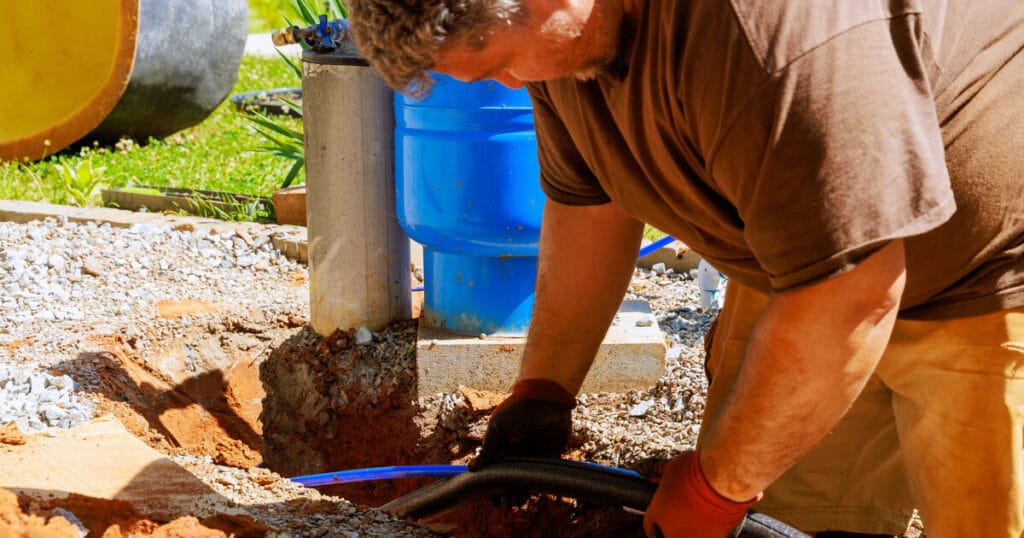How Long Does a Well Pump Last? Heil Plumbing Breaks It Down
5 min read • November 8th, 2025
5 min read • November 8th, 2025


If you’ve just moved into a home with a well or if your current well pump system is getting up there in age, you might be wondering: how long does a well pump last? It’s a smart question to ask—because when your pump goes, so does your water.
The short answer? Most well pumps last 8 to 15 years. With excellent water quality, proper sizing, and regular maintenance, some can even make it past the 20-year mark. But a lot depends on how your system is set up, how much you use it, and what’s actually in your water.
Let’s take a deeper dive into what affects well pump lifespan, the early warning signs of failure, and what you can do to keep yours running strong.

Reading our blog: How Do Well Pumps Work can be very helpful as you seek to understand the factors that impact how long a well pump lasts. Its longevity depends on a mix of mechanical, environmental, and usage-related factors:
With the right conditions and regular care, a well pump can easily go 20+ years. Without it, you’re looking at replacement much sooner.
So how do you know if your pump is reaching the end of its life? Here are the warning signs to watch for.

How do you know when your pump is struggling? Here are the most common red flags:
Declining water pressure or a pump that is not keeping up signals that your pump is gradually declining. But if your pump won’t shut off, if you have no water at the tap, or if your water is sandy, you may have a more urgent issue.
So what’s the next step?
If your pump is less than 10 years old and the issue seems minor — like a faulty pressure switch or a small water leak — a repair is usually the smarter (and definitely more affordable) option.
According to our well pump expert, Rob, if your pump is 12 to 15 years old, breaks down often, or can no longer meet your water needs, it’s probably time for a replacement. Major issues like a worn-out motor or damaged impellers aren’t always worth fixing — especially if the rest of the system is aging too.
And if your water has recently changed in color, smell, or taste, don’t wait to call a pro. A full system inspection can uncover whether the issue is with the pump or something deeper in the well.
Of course, the best way to avoid well pump repairs or replacements is to take good care of your system now. With the right habits and a few upgrades, you can keep your well pump running efficiently for years longer than average.
If you want to keep your pump running smoothly and avoid expensive repairs or replacements, these simple steps can help:
Little issues become big ones fast—so routine maintenance and early detection are the keys to saving money and avoiding water outages.
On average, a well pump should last 8 to 15 years. With clean water, proper sizing, and regular maintenance, some can last 20 years or more. However, factors like sediment buildup, frequent cycling, and high water demand can wear out a pump much sooner. Routine inspections and early repairs are key to getting the most life out of your system.
If your pump is over 12–15 years old, breaks down frequently, struggles to keep up with your water use, or makes loud or unusual noises, it may be time for a replacement. A sudden loss of water, cloudy or sandy water, or a pump that won’t shut off are more urgent red flags. When in doubt, a licensed technician can evaluate whether repair or replacement is the smarter move. For more information on replacing a well pump, read How to Replace a Well Pump.
The total cost to replace a well pump typically ranges from $1,300 to $5,300, depending on the type of pump, how deep your well is, and labor costs in your area. Submersible pumps tend to cost more to install than jet pumps, especially for deeper wells. A professional estimate can give you a clearer picture based on your specific setup.
We recommend a professional inspection at least once a year. Annual servicing helps catch small issues before they turn into costly repairs. You should also test your water quality regularly, replace sediment filters as needed, and monitor pressure changes or unusual noises between visits.
In most cases, standard homeowners insurance won’t cover wear-and-tear or mechanical failure of a well pump. However, if your pump is damaged due to a covered event — like a fire or electrical surge — some policies may offer partial reimbursement. It’s always a good idea to check with your insurance provider to understand what’s covered and what isn’t.
If you’ve read our blogs, live in Maryland, and feel like you could benefit from professional well pump service, reach out to Heil Plumbing. We’ve helped thousands of Maryland homeowners install, maintain, and troubleshoot their well systems. If you’re noticing red flags — or simply want a professional second opinion — we’re here to help you stay ahead of problems. Local, licensed, and trusted by Maryland homeowners, Heil Plumbing is your go-to for well pump repair and replacement in Howard County and beyond.





